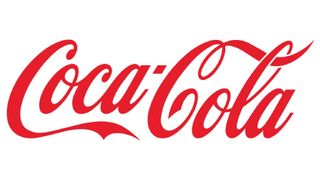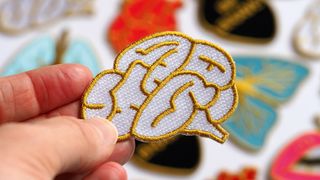Luke Hayman
Acclaimed and influential, Luke Hayman's editorial design is the talk of numerous design publications and blogs. Nick Spence catches up with him.
In the world of magazine design Luke Hayman is something of a superstar. Born in Hemel Hempstead, Hayman studied graphic design at London's Central St. Martins School of Art before moving to New York in 1992. There he has steadily built a remarkable reputation, partly based on his celebrated work and partly, by his own admission, by never staying in one job for more than two years. Hayman has been instrumental in the design and redesign of an impressive number of prestigious and influential publications, including i.D. magazine, New York magazine, Time magazine and, most recently, Radar magazine. In December 2006, and after receiving several major awards, Hayman joined Pentagram, the renowned multidisciplinary design firm with offices worldwide, at its New York office as a partner.
Hayman really began to establish his name when he joined New York magazine as design director in 2004. Working alongside editor-in-chief Adam Moss, he was instrumental in restoring the title to prominence, winning a clutch of awards in the process.
Moss wanted to re-establish the look and influence New York had enjoyed in the 1970s, without simply copying it. Founded by famed graphic designer Milton Glaser, and editor and journalist Clay Felker in 1968, New York attracted writers of the calibre of Tom Wolfe, Gloria Steinem and Nik Cohn, and played a politically and socially important role in society. Such a pedigree meant Hayman needed to evolve rather than re-invent the magazine, identifying and focusing on the elements that had made it great, distinct and ownable.
The iconic New York logo was reworked, reducing its size but not impact, each section was given its own look, new type faces were introduced, and renewed emphasis was placed on strong covers that reflect the knowing New York attitude: a bit clever with a dose of humour. The challenge was maintaining a consistent look across what were effectively four magazines in one, giving space to both extended features while trying to cram in as many listings as possible. The move had many fans; but not all feedback was positive. "Every redesign gets some negative feedback and it's usually benign. However, I received one letter at New York that was unsettling," remembers Hayman. "Very angry, along the lines of 'You fucking bastard, the type is too small'. It was unsigned with no return address. I showed it to Adam Moss and he shrugged: 'I get about four of those a week'."
A keen eye for detail extended to having a say in what illustration was used, although the ability to art-direct photography was limited by a lack of time due to New York being a weekly. "I love illustration and I'm always Googling names I spot. Designers I work with have the bug too and it becomes a competitive sport: finding an obscure or new talent and commissioning them first. Preferably before The New Yorker! The web is a fantastic way of seeing a lot of art. Meeting people and seeing actual work is sometimes better but finding the time is tough." The internet has also given Hayman an unprecedented instantaneous level of feedback from websites and blogs, such as Jeremy Leslie's magCulture, that focus on magazine design.
On joining Pentagram, Hayman found himself working on another long-established publication in TIME with a history dating back to 1923. Owned by Time Inc, the largest magazine publisher in the US, and part of Time Warner Inc, the world's largest media and entertainment conglomerate, Hayman faced new challenges adapting to working in an environment where so many had a say. "With this redesign, I took an office at Time Inc and spent at least 90 per cent of the week there. I find we're more efficient when the client is in a separate building, state, country!" In retrospect, Hayman realised he had become too close to the conglomerate. "Many, many hours are spent in meetings, listening to people who decide to drop into your office for a chat, and managing up, down and across. There are advantages of working with editors in real time. However, at TIME, like every mag, these same editors have day jobs and tend to disappear for hours or days when you most need them. A good analogy regarding in-house redesigns is that you're changing the tyres while the car is still moving."
The new look and structure effectively modernised the magazine while still retaining what Hayman calls the TIME 'DNA', deliberately choosing fonts and design elements that echoed the past. The team used the display typeface Franklin Gothic that was part of the history of the magazine, and revisited the grid used by Walter Bernard, the legendary editorial designer; although time - or lack of it - also played a part. "The work was compromised by the lack of time; there must be a joke in there. A lot of the pure design decisions are remarkably intact: fonts, palettes, grids and page structures," says Hayman. "A lot of the editorial ideas that were developed early on together with Paula Scher here at Pentagram didn't make it through for various reasons. We thought we had some nice ideas about how the print magazine connected with the website."
Most recently Hayman has collaborated on the striking redesign of Radar magazine with the launch of the July/August 2008 issue. First published in 2003, Radar is now on its third redesign and has had a short but chequered history. It survived an early obsession with Paris Hilton to combine the lowbrow with the highbrow, to great effect. The mix of celebrity gossip and serious journalism, however, required a delicate balancing act trying to accommodate both along with the magazine's humorous, irrelevant, provocative tone. Hayman concludes that the brief was tricky and says he worked closely with Radar design director Kate Elazegui on the redesign, who had previously been a colleague and art director at New York magazine, where he helped establish his name.
Keen not to simply regurgitate that award-winning design format, Hayman and his team looked at legendary anti-establishment publications from the 1960s and 70s for inspiration. Countercultural newspapers and British satirical magazines were key influences and these were initially shown to the client. "We presented first in the form of scraps of ephemera, copies of pages from magazines like Ramparts, Evergreen, Eros, The East Village Other, Nova - plus pages from various books; basically a lot of 1960s and 70s alternative and underground material. Humour was important too: Spy, Private Eye, Monty Python etc," explains Hayman. Some of the wilder ideas were reined in but the process proved vital in setting the right tone for the redesign. "The idea was to agree upon a tone. This was very useful because we'd gone too far off the edge and were directed towards a more mainstream solution."
Unlike his experience working on Time, Hayman worked from the New York offices of Pentagram on the Radar redesign and has been retained for the first three issues of the magazine relaunch. Pentagram offers a unique level of creativity, flexibility and collaboration; partners operate as equals - each a practising designer, they work as individuals or together on projects. All partners sit and work in an open plan space, supported by their own teams and by central administrative resources. Hayman's small design team is situated on a separate floor, which means some degree of tooing and froing. Unusually clients work directly with partners and designers, with no intervening account management.
Having agreed the overall look of the magazine with Radar founder and editor-in-chief Maer Roshan, Hayman and Elazegui worked on dummy layouts. "The second, and subsequent presentations consist of layouts printed at 100 per cent and trimmed, no fancy black boards with generous frames." The pair also expanded and refined the magazine's structure, moving, and in some cases reinstating, sections to create a better flow and add focus. The List, for instance, offering topical and amusing charts and diagrams, was moved from the back to the front, while Play, focusing on culture, books, music, movies, television and politics - a section that had previously appeared in some issues - was permanently reinstated. Real ads were used to enforce how images and text would look once live. "When relevant we show pages against realistic advertising, not just the pretty ones," adds Hayman. Unlike the UK, where the vast majority of magazine sales are from shops and supermarkets, US publishers rely heavily on discounted subscriptions to increase readerships and impress all-important advertisers. A one-year 10-issue subscription to Radar, for example, costs just $10.00.
Again Hayman suggested possible illustrators to enhance the design and feel of Radar, as well as selecting which - often contentious - typefaces and fonts would be used. Hayman describes on his blog that the magazine is typographically bizarre and eclectic, using a varied collection of fonts to create a madcap spirit. "Cooper Black is employed for its Pop touch; FF Elementa, a typewriter font, for its ephemeral immediacy and implied journalistic integrity. Plantin is used for the text font, and in bold condensed for headlines." Once the first issue was completed the team looked hard to see where improvements could be made before the second issue went to press.
"When the second issue was in production we reviewed pages, and the art director Kate and I discussed them in depth via phone and email. The cover conversations included the editor too," explains Hayman. "We, of course, had a thorough post-mortem of the first issue and Pentagram took some pages and reworked them."

Thank you for reading 5 articles this month* Join now for unlimited access
Enjoy your first month for just £1 / $1 / €1
*Read 5 free articles per month without a subscription

Join now for unlimited access
Try first month for just £1 / $1 / €1
Get the Creative Bloq Newsletter
Daily design news, reviews, how-tos and more, as picked by the editors.
The Creative Bloq team is made up of a group of design fans, and has changed and evolved since Creative Bloq began back in 2012. The current website team consists of eight full-time members of staff: Editor Georgia Coggan, Deputy Editor Rosie Hilder, Ecommerce Editor Beren Neale, Senior News Editor Daniel Piper, Editor, Digital Art and 3D Ian Dean, Tech Reviews Editor Erlingur Einarsson and Ecommerce Writer Beth Nicholls and Staff Writer Natalie Fear, as well as a roster of freelancers from around the world. The 3D World and ImagineFX magazine teams also pitch in, ensuring that content from 3D World and ImagineFX is represented on Creative Bloq.




